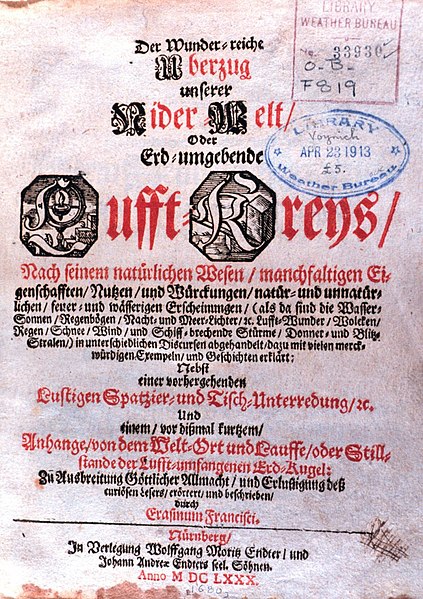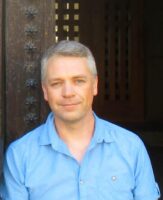by Charles Lear, author of “The Flying Saucer Investigators.”
 People have probably been reporting strange things in the sky for as long as they’ve been able to communicate. Chris Aubeck is a researcher who reaches far back in the historical record searching for UFO cases and is a founder of the Magonia Exchange, which is a group dedicated to the collection and archiving of fortean reports. In the June 2015 issue (page 11 of pdf) of Edge Science magazine, he and National Aviation Reporting Center On Anomalous Phenomena (NARCAP) associate Martin Shough detailed their investigation of a 1665 report from Barhöfft, Sweden (now part of Germany), near Stralsund, that received a lot of attention at the time. The article is an excerpt from their 2015 book, Return to Magonia.
People have probably been reporting strange things in the sky for as long as they’ve been able to communicate. Chris Aubeck is a researcher who reaches far back in the historical record searching for UFO cases and is a founder of the Magonia Exchange, which is a group dedicated to the collection and archiving of fortean reports. In the June 2015 issue (page 11 of pdf) of Edge Science magazine, he and National Aviation Reporting Center On Anomalous Phenomena (NARCAP) associate Martin Shough detailed their investigation of a 1665 report from Barhöfft, Sweden (now part of Germany), near Stralsund, that received a lot of attention at the time. The article is an excerpt from their 2015 book, Return to Magonia.

Aubeck and Shough begin by describing the political and cultural circumstances at the time of the incident. According to them, “in 17th century Europe, celestial prodigies were treated as potentially inflammatory propaganda, which meant that printing full names could put witnesses at risk.” Newspapers had just started to be published based on the gazette format, and journalism was just beginning to be developed. In 1665, France put out its first scientific journal, Journal des Sçavans, and the first issue of the British publication, Philosophical Transactions of the Royal Society, was put out in April of that year.
That month, on April 8, fisherman in Stralsund reported that at 2:00 p.m., while anchored near Barhöfft, they saw a huge flock of birds that formed into shape “like a long passage in a house,” in the words of Erasmus Francisci. Francisci collected news reports of the incident and published an account in 1680 in a book titled Der Wunder-reiche Unserer Nider-Welt/Oder Erd-umgebende Lufft-Kreys which in English is The Wonderfully Rich Covering of our Lower World, or Earth-surrounding Lufft-Kreys. Francisci’s book contains descriptions of strange phenomena, much like the books of Charles Fort. One of the illustrations in it depicts a rain of rats.
 According to Aubeck and Shough, the “long passage” shape turned into a warship followed by others that seemed to come in from the north. Another group came in from the south and the two began firing cannons at each other. In the aftermath, the fishermen saw the broken masts of the southern group and could make out a man dressed in brown carrying a hat under his right arm watching other men working and running about. They saw flags and ships everywhere, and a ship then came in from the west. By 6:00 p.m., the northern fleet left the southern fleet behind.
According to Aubeck and Shough, the “long passage” shape turned into a warship followed by others that seemed to come in from the north. Another group came in from the south and the two began firing cannons at each other. In the aftermath, the fishermen saw the broken masts of the southern group and could make out a man dressed in brown carrying a hat under his right arm watching other men working and running about. They saw flags and ships everywhere, and a ship then came in from the west. By 6:00 p.m., the northern fleet left the southern fleet behind.
What happened next is described in the account provided by Aubeck and Shough, which they describe as being the earliest, that comes from a leaflet published in Leipzig in 1665 titled Eine abgebildete Beschreibung von dem wunderlichen Stralsundischen Lufft-Kriege und Schiff-streite which translates to “An illustrated Description of the miraculous Stralsund Air-wars and Ship-battles.” The account is as follows:
… a little while later, out of the middle of the sky appeared to them a round flat form like a plate and like a big man’s hat [umbher begriffen] with colors like the moon when eclipsed. It seemed to stand directly above St Nicholas Church; and stayed there until the evening. After which the sailors, now full of fear and dread, could no longer watch nor wait for the end of this terrible and suspicious spectacle; they retreated to their huts where in the following days they found their hands and feet, and their heads and other body parts, burdened by a great shaking.
Aubeck and Shough quote from an article in the April 10, 1665 Berliner Ordinari und Postzeitungen:

One of these fishermen had been sick on his feet. All of the citizens who have observed this are reliable. Yesterday, Herr Colonel von der Wegck and Docter Gessman interrogated two of the six fishermen. May God change this miracle for the best.
Aubeck and Shough devote the last five pages of the nine-page article to speculation on what it was that the fishermen might have seen. They specifically mention “murmerings of starlings” in which the birds number more than a million and are popularly referred to in the area as “The Black Sun.” The authors express the opinion that the starlings couldn’t have maintained the shape reported over the church for the length of time it was said to have been seen.
One phenomena they consider is what is known as a fata morgana (Aubeck and Shough use the word “mirage”) which is where atmospheric conditions are such that a steep thermal inversion and an atmospheric duct are created which cause light rays to bend. Under these conditions, objects on the ground or the surface of the sea can appear to be floating in the air.
The authors also consider lenticular clouds, planetary bodies, ice halos, and sun dogs and conclude that the length of time that the plate-shaped object was seen and the persistence of its shape make the above explanations unlikely.
Francisci EngravingAubeck and Shough’s article is illustrated with examples of the material they referenced that includes elaborate engravings depicting what was described. The material was put on display from May 5 to September 3, 2023, as part of an exhibition celebrating the case by the Kunstbibliothek at the Staatliche Museen zu Berlin. The Kunstbibliothek is a network of museum libraries devoted to art history and cultural studies.
From the website promoting the exhibition is this description: “…the exhibition reconstructs the way this event was portrayed in the media and exposes certain paradigms and communications strategies that are still used today to determine how we report on ‘unexplained aerial phenomena.’” It is explained that one of the themes of the exhibition is “the power of myths.” According to the website, a myth that came out of the Stralsund incident was that the object reported over the church was “a sign of God’s wrath” after the church was struck by lightning five years later on June 19, 1670.
Podcast: Play in new window | Download